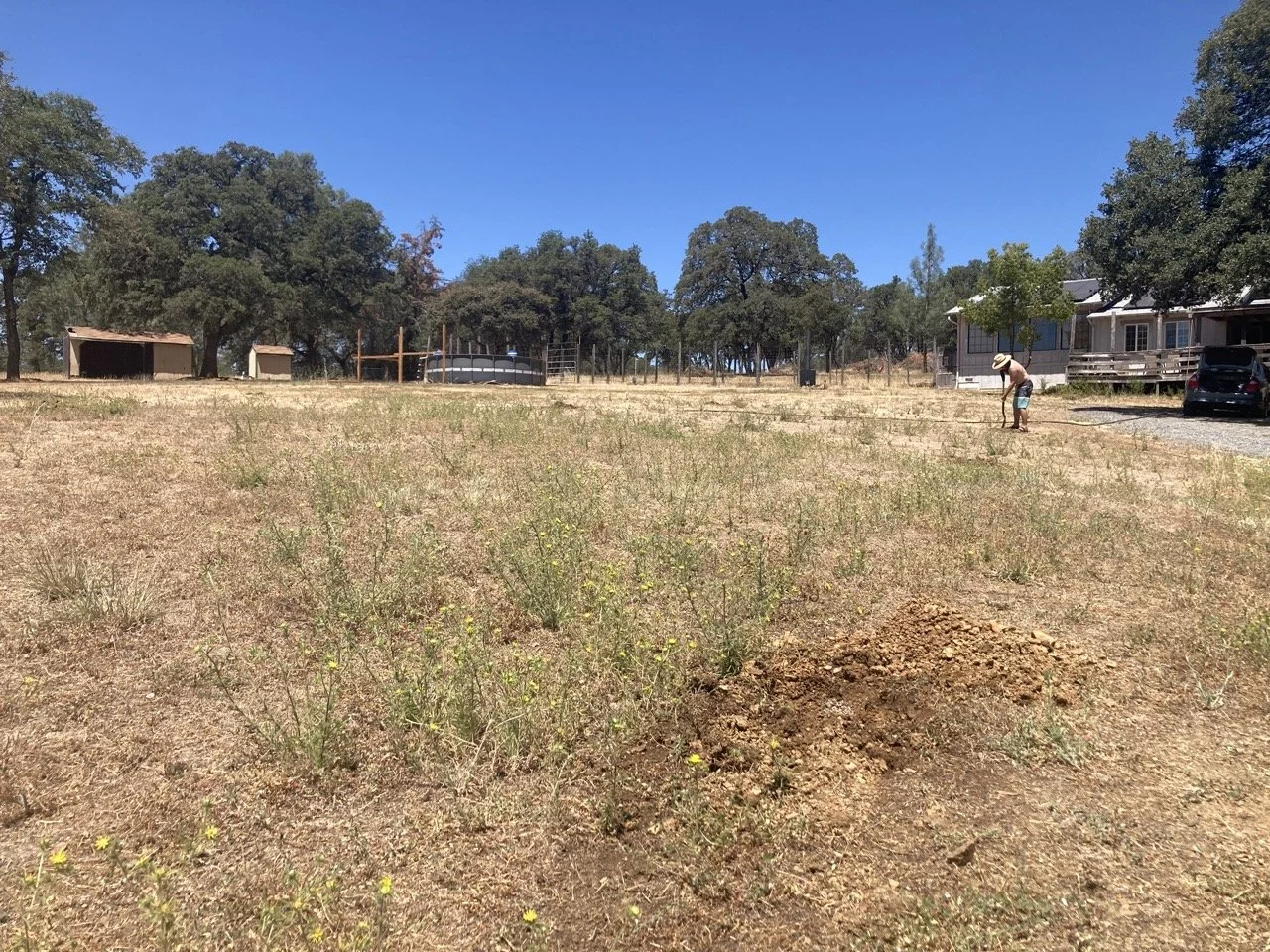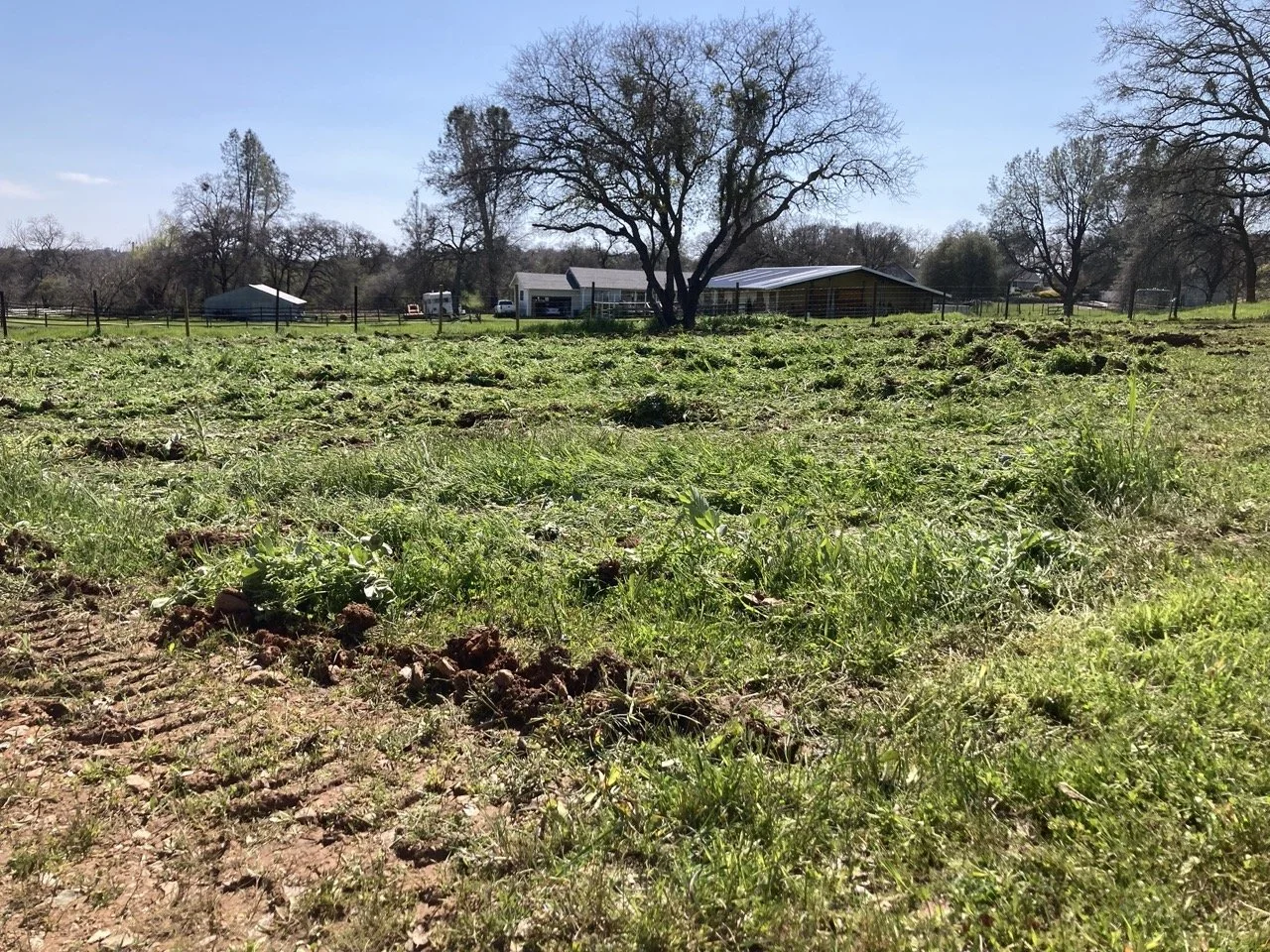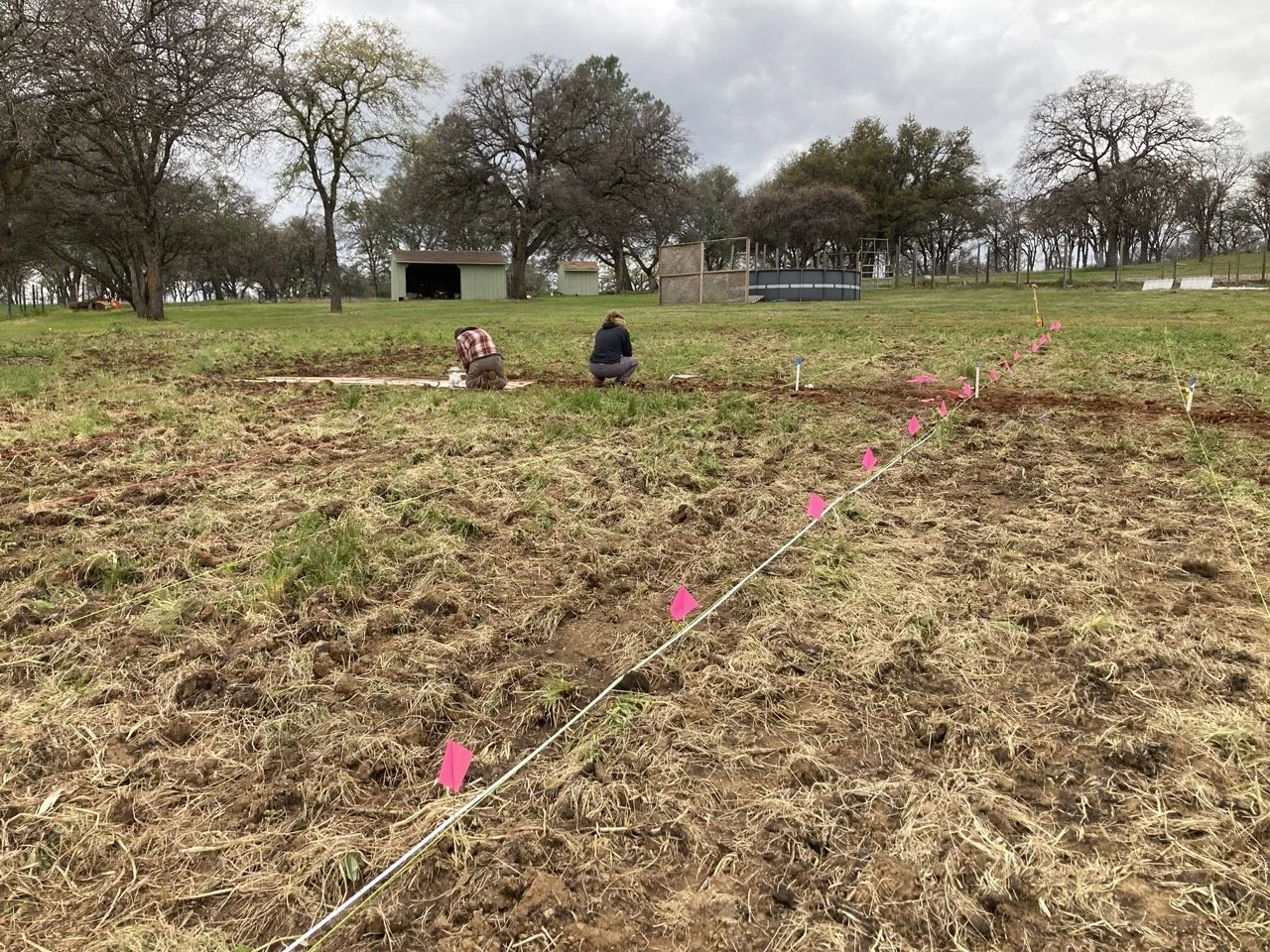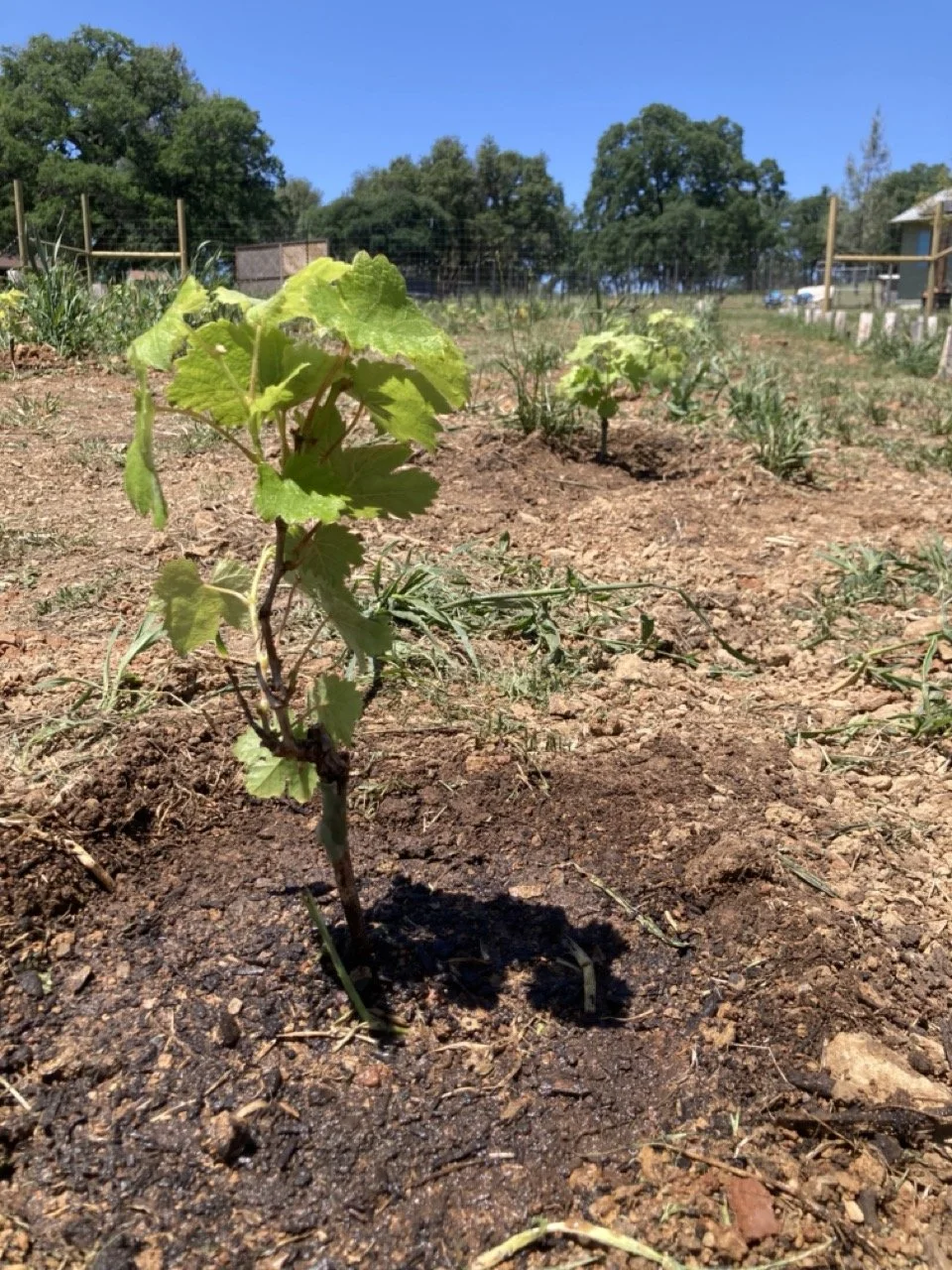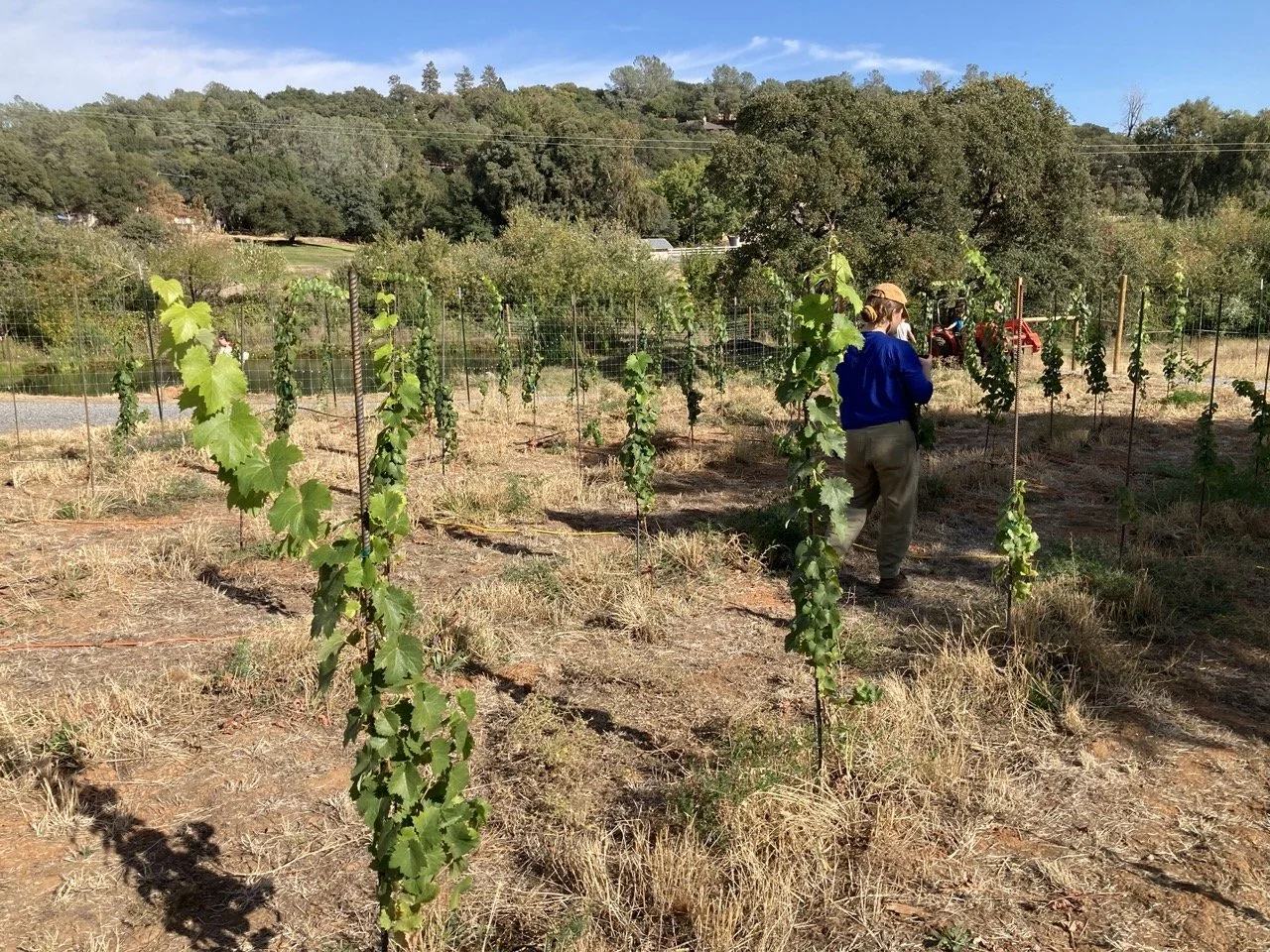Planting a vineyard to regenerate an ecosystem.
It seems counterintuitive, since the act of growing fruit for harvest is by itself a form of extraction. However, if we add to the ecosystem more than we take, the act can help to regenerate and restore diverse life.
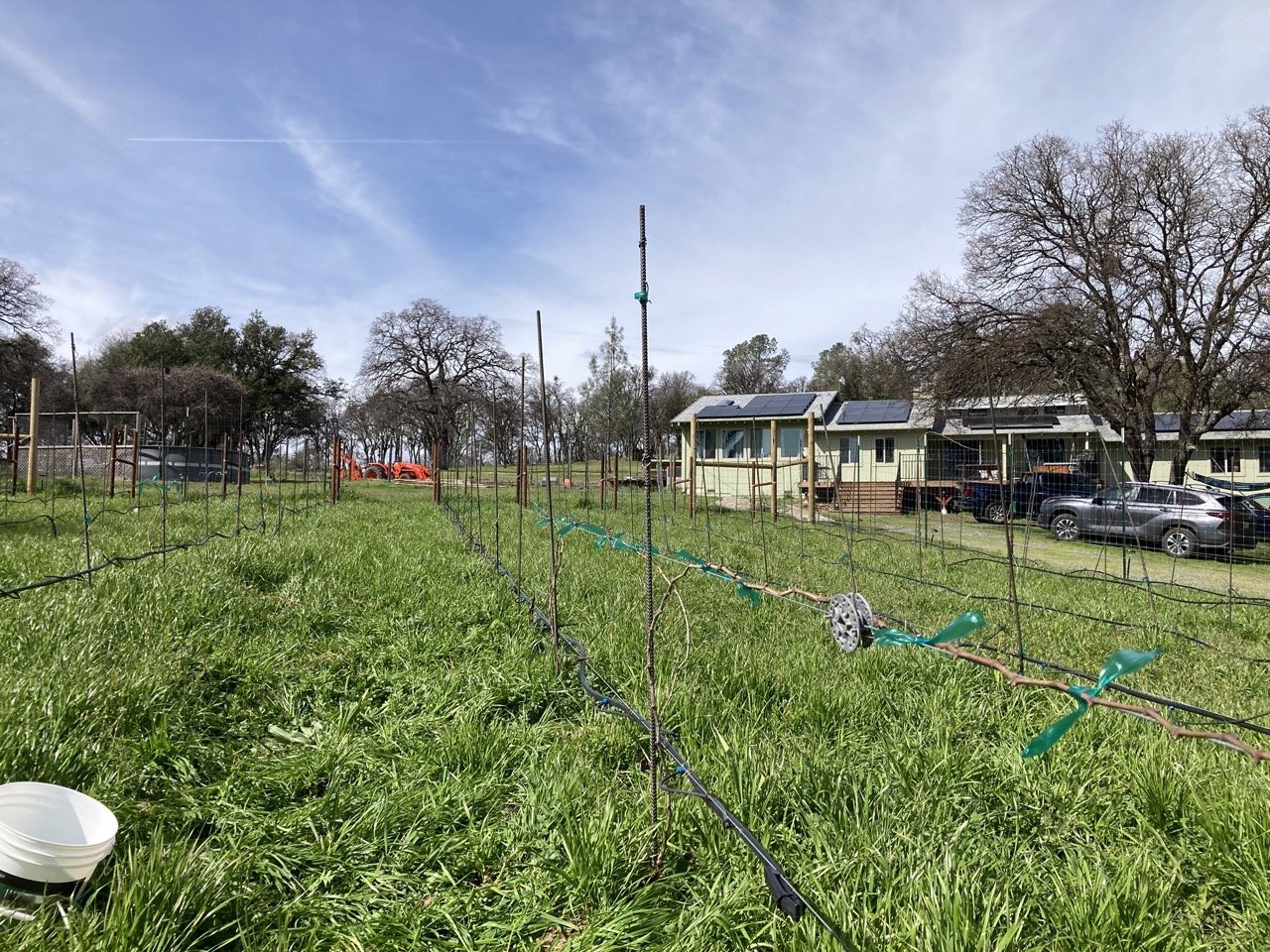
Starting with a degraded ecosystem.
The front lawn of Dacha de Sito was sparsely covered with mostly invasive plants when we started. The soil was heavily compacted with very low Soil Organic Matter (SOM) making water drainage slow in most of our perk tests (most of the soil was high in clay, although some areas were sandy and rocky). Our plan to improve soil biology and drainage was to do a one-time till (going forward the vineyard would be no-till) in order to break up the compaction, then add compost and plant a cover crop for the winter.
Bringing the soil back to life.
In the spring we had a lush, green mix of peas, oats and vetch growing several inches tall on our once barren piece of ground. We terminated the cover crop by discing it with a tractor. This left the ground somewhat uneven since it was very wet and the tractor wheels sunk in some places. We then left the cover crop to decompose into the soil. This was the first step in increasing SOM.
Preparing to plant.
Next we laid out the rows with flags and put in a hard lines for the drip irrigation. The soil was still very wet and muddy this early in the season, and the digging was tough, even with a trencher. We got stuck in the mud a few times. But luckily our plan only included a single hard line down the middle of the vineyard in the shortest direction, so it could have been worse. On the bright side, we were lucky to get a winter of heavy rain in the otherwise drought-stricken central valley.
Vines in the ground.
We had a planting party with several of our friends, and got 80 bare root Mourvedre and Roussanne plants in the ground on one day, and the remaining 40 potted Tannat a few weeks later (potted vines have a later planting date). Then we began watering and we watched and waited.
A vineyard takes shape.
By the end of summer most of the vines were growing vigorously, even with the dry heat and only two days a week of watering (some central valley vineyards water their grapes every day). We still have a lot of work to do to improve the soil and ecosystem (next step will be planting some native pollinator and companion plants in the vineyard), but its off to a strong start. We will continue planting cover crops, adding compost and eventually bringing in animals to continue improving our soil ecosystem.
